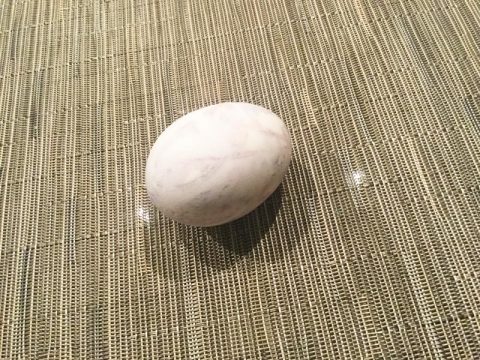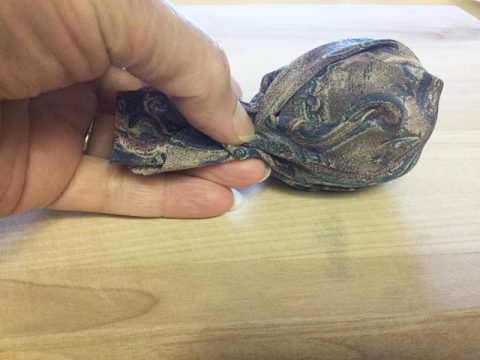Learn how to easily dye Easter eggs using scraps of silk from neckties, scarves, and old clothing. That’s all it takes is silk fabric, water, and white vinegar to create beautiful silk-dyed Easter eggs. I also provide an egg-free Easter coloring alternative for those with kids who are allergic to eggs. Have fun!ggs. Have fun!
If your child has an egg allergy, consider purchasing these special plastic eggs to color just like real eggs!
What Not to Do:
First, allow me to go over you should not do. To make these silk dyed Easter eggs, it is recommended to use a nonreactive pan which means only ceramic, enamel, or stainless steel. Nonreactive cookware prevents metal from leaching into the food you cook when using acidic ingredients such as tomatoes, citrus, and vinegar. I wasn’t sure whether the suggestion to use non-reactive cookware in this recipe was to prevent metal from leaching into the eggs or if reactive cookware prevents the transferring of ink from the fabric onto the eggs. So, the chemist hidden in me wanted to know if this recipe would work if I used a non-stick saucepan, boiling only for the minimum recommended amount of time of 20 minutes. In addition, all of the recipes I could find does not specify the amount of time for cooling.
Meanwhile, the 20 minutes boiling time and 5 minutes cooling in the refrigerator, using a bland-colored silk fabric did not result in much as you can see:
I used this fabric:
So, follow the below instructions to the letter and only use bright-colored fabrics. Enjoy your Easter!
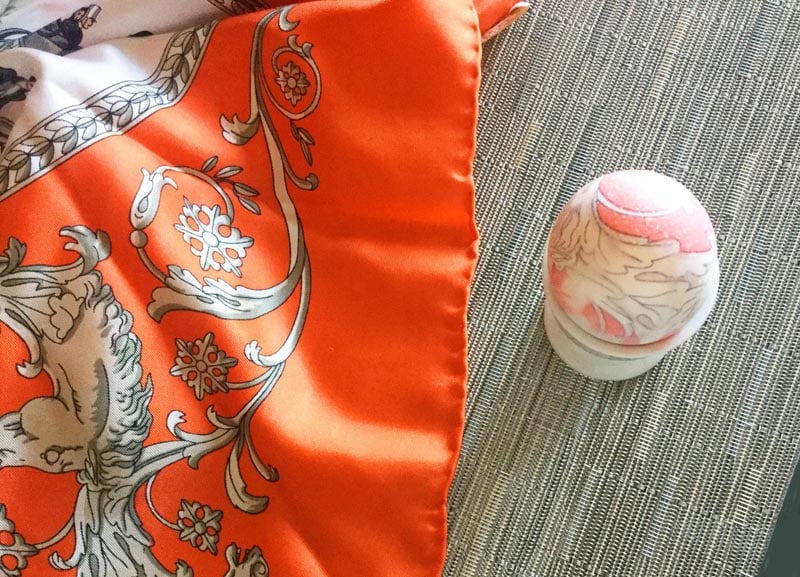
A new and fun way to color Easter eggs!
Ingredients:
- 3 quarts water
- 1/4 cup white vinegar
- Non-reactive saucepan (ceramic, enamel, or stainless steel)
- Raw white (not brown or colored) eggs
- Brightly colored printed 100% silk fabric
- White or other non-dyed fabric
- Cooking oil, for shining eggs (optional)
Instructions:
- Cut squares of silk fabric large enough to wrap around the egg and have enough left over to twist closed. Gently, but tightly twist the top of the fabric and seal with a rubber band. (Rubber bands work best, but you can use twist ties if that's all you have on hand.) Try to get fabric touching as much of the egg as possible. The fabric must touch to egg to transfer the pattern.
- Cut squares of white/off-white-colored fabric and have enough left over to twist closed. Wrap the silk-wrapped eggs in the white-colored fabric. Again, carefully twist the fabric and tie off with preferably a rubber band (or twist tie).
- Place the wrapped eggs, as many as you desire, in a pan of water; add vinegar. The tighter they are packed together the better because the pressure from the other eggs will ensure a nice transfer of pattern onto your eggs. Bring the water to a boil; boil for 40 minutes.
- Remove the eggs from the water using a slotted spoon and place them in a heat-proof bowl or colander to drain. Refrigerate overnight or for 6 to 8 hours.
- Once the eggs are chilled, unwrap and see what you have! They turn out different depending upon how you wrap them.
- If desired, for to create shiny eggs, add a little cooking oil to a paper towel and wipe on the eggs. Wipe off excess oil using a clean paper towel.
- Use as a decoration.*
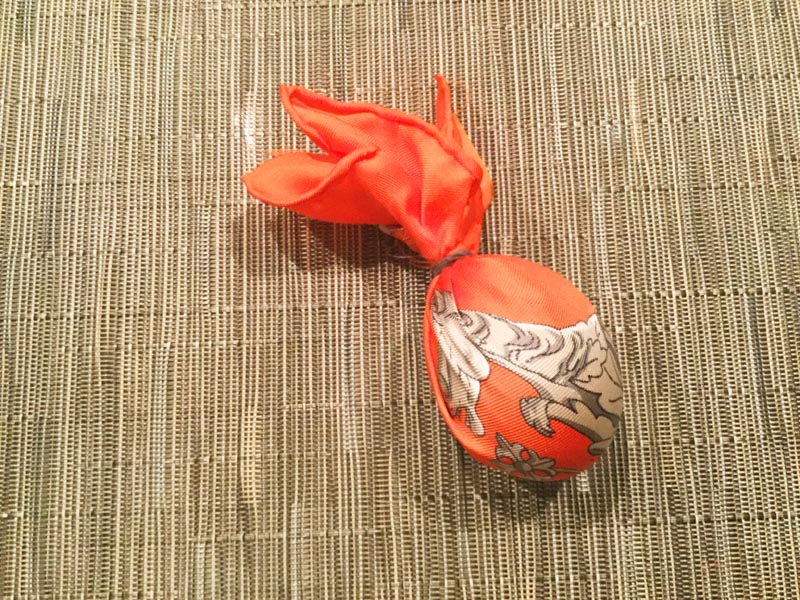
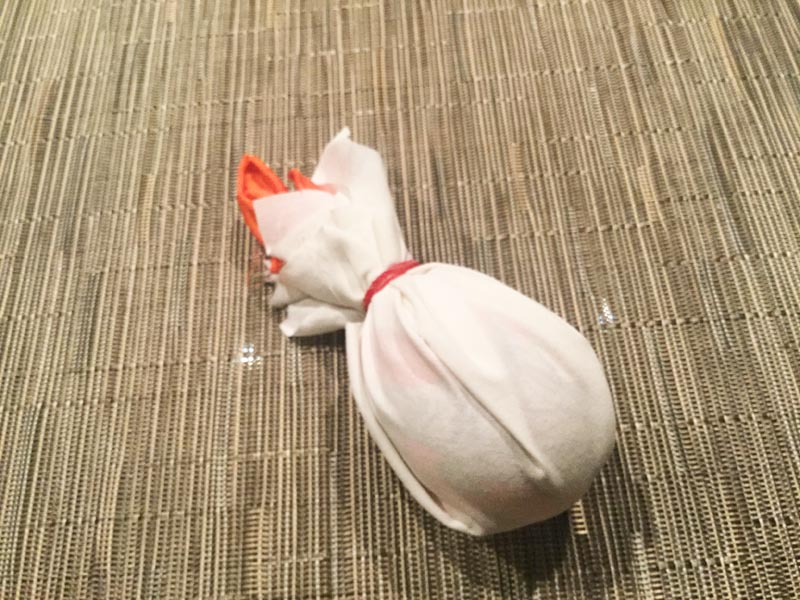
Tips
***Dyes used in silk fabric may or not be safe. Avoid eating the eggs, if you are not sure. Plus, when you cook them for 40 minutes, they turn a bit out dry.***



